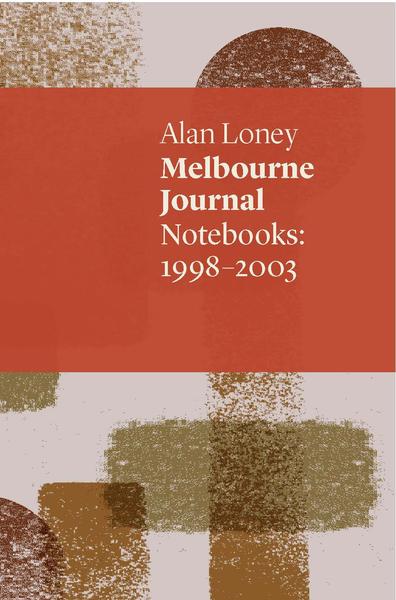
Melbourne Journal: Notebooks 1998-2003 by Alan Loney
UWAP Poetry, 2016
The publication of these notebooks completes the series that begins with Sidetracks – Notebooks 1976-1991 (Auckland University Press, 1998) and ends with Crankhandle – Notebooks November 2010-June 2012 (Cordite Books, 2015), the latter winning the Victoria Premier’s Literary Award for Poetry 2016. Melbourne Journal: Notebooks 1998-2003 is divided into seven sections of between two months and two years. Three threads dominate my reading of Alan Loney’s notebooks of the period: use of the fragment; the self and its relationship with writing; and observations of the world and what impact they have.
Loney’s work celebrates the fragment. This postmodern trope has been a constant of his writing career and is perhaps even more noticeable in this volume than others. The brevity of many of the entries here, some lineated and others in prose, speaks of the unfinished. He also makes new use of the sequence, another favoured structure.
From the first page the writing evokes a sense of dislocation. This is balanced by the links between the fragments of poetry, of thought and discussion, which speak in diverse ways as the strophes of the whole. The fragments are enough to signify that they go together to make up something; though, at first, we’re not sure what. As well as the idea of the book, which endures throughout Loney’s writing, aging is an important preoccupation here. One section of prose breaks off: ‘I have made no provision whatever for my later life’, and is followed by:
but the woman there tells me I have no accent, and nor does she, a Melburnian who lived in Europe a few years. That’s it then – unidentifiable by sound (October 1998-May 1999)
Whilst Loney expresses an avowed discomfort at new places, there is a desire for a new start (December 2002-July 2003), and Melbourne seems to represent this.
What appeals most about the arrangement of pieces in Melbourne Journal is the way they speak to each other; the way Loney, a master of juxtaposition, uses the sequence to create novel connections. In Sidetracks – Notebooks 1976-1991, he breaks the word ‘juxta-position’ across stanzas to emphasise particularity in a memorable way. He continues such inclinations in the latest collection, on a more structural level. For example, one eccentric description of three people exchanging a roll of bank notes is counterpointed with ‘what a supremely oral culture we are’ (October 1998-May 1999), as if to comment on the story-making qualities of the scenario described and the poet’s own ‘telling’ of it—but with a dash of irony since the characters weren’t reported as speaking.
The book’s movement from prose to poetry is often a happy one, in terms of achieving diversity in narrative voice. Sequences such as the following throw wide open the process of narrative formation in the mind of the reader:
I am living, house-minding for a few days, in a dwelling owned by a successful middle-class family, in which there is not one thing, no picture, no piece of furniture, plate, glass, cup or vase that I would choose for my own use - a swarm of tiny flies in the evening sunlight: they move at such speed it’s a wonder they are not in continual collision with each other - Michelle Anderson: “the type in this book’s too big for words” - his walk is a bit lanky, loose about the shoulders, with a perceptible sway or swing about it. She is upright, brisk and business-like, a crisp quick body alongside his (Melbourne May-December 2001)
Here, the strophes of the poem are constantly in collision with one another. Why do they occupy the same page? The comment about the flies might reflect on the house where Loney was house-sitting, or the flies in some way mirror the disconnections of modern life. Does the third fragment comment on the first in some way? Does the fourth contextualise the others? Is the man described a new character, or the author disguised? Perhaps the fragmented sequence reflects thinking processes. Much of Loney’s writing emphasises the idiolect, a form of speech specific to each voice; it may be evoked by any stream-of-consciousness writing or work which allows the disjunctions of thinking to exist on the page.









